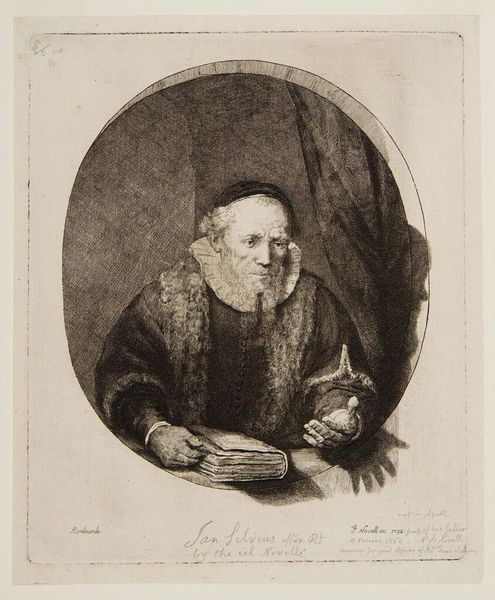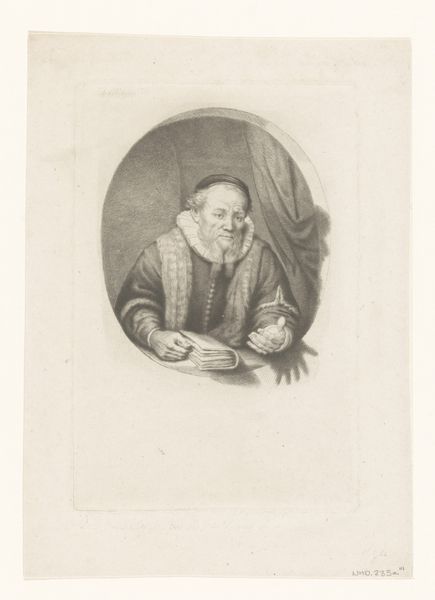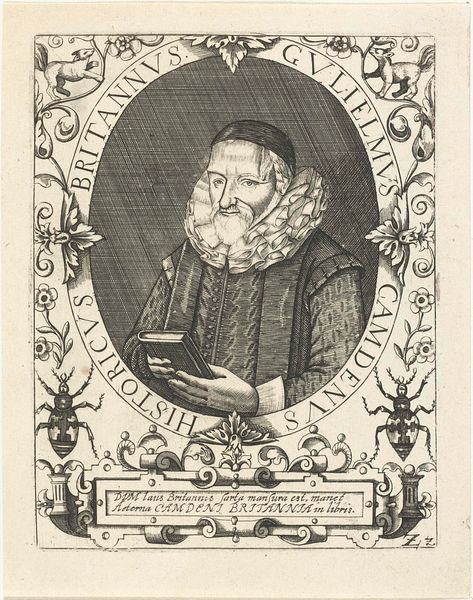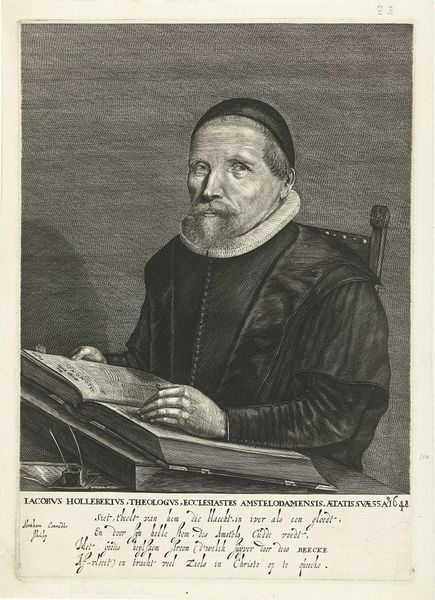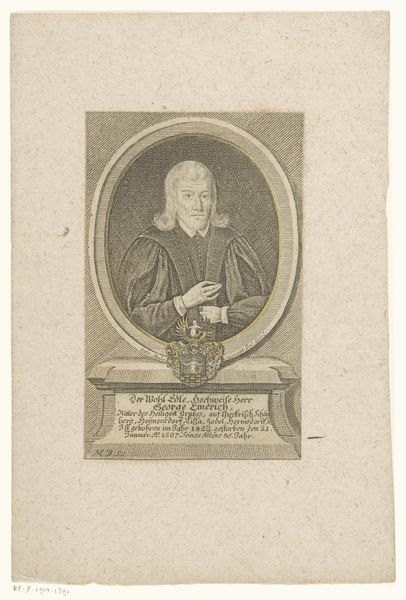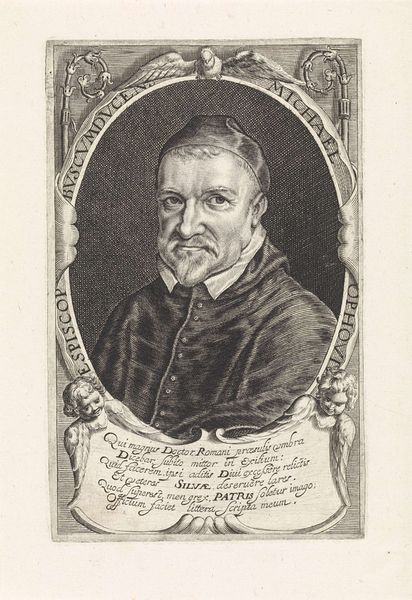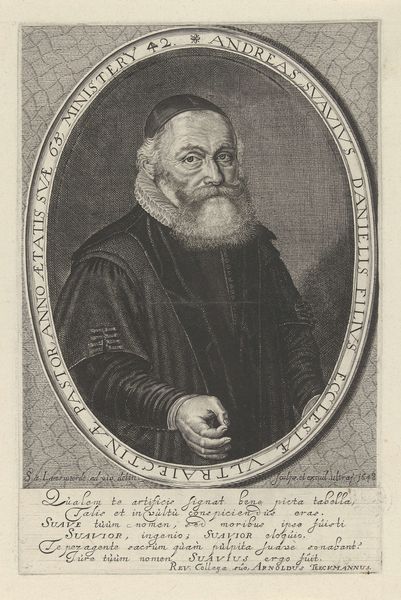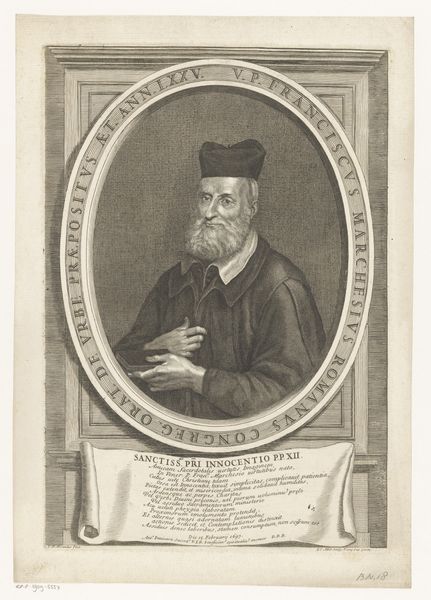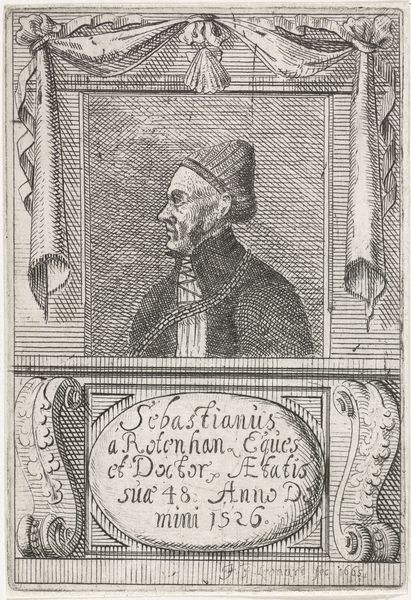
print, etching, paper, engraving
#
portrait
#
baroque
# print
#
etching
#
old engraving style
#
paper
#
engraving
Dimensions: 28 x 19 cm
Copyright: Public domain
This is an engraving by Rembrandt van Rijn, made around 1638, depicting Jan Cornelis Sylvius. Rembrandt was a master of the etching process, using acid to bite into a metal plate, which is then inked and printed. Here, the material qualities of the metal and the precision of the etching technique are paramount. Look closely and you’ll notice how Rembrandt varies the density of the lines to create light and shadow, giving the portrait a remarkable sense of depth and texture. The sharp, precise lines capture the details of Sylvius's face and clothing, while also conveying the weight and materiality of the printed image. Engraving was a key medium for disseminating images and ideas in the 17th century. It allowed for the mass production of artworks, making them accessible to a wider audience. In a sense, prints democratized art, moving it away from unique, hand-painted works towards a more reproducible, and therefore more widely available, form. The image became more easily distributed, reaching a growing market for art. This engraving is more than just a portrait; it's a testament to the power of printmaking in a rapidly changing world.
Comments
No comments
Be the first to comment and join the conversation on the ultimate creative platform.

